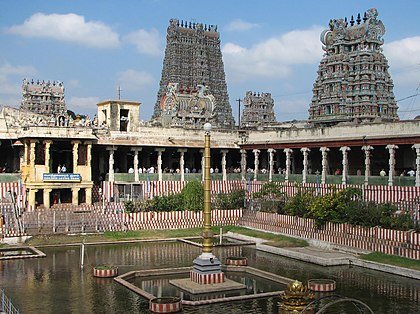
Three seeds are sowed in the Tamizh soil – Language, Poetry & Literature, Music and Dramatic literature called Muttamizh.
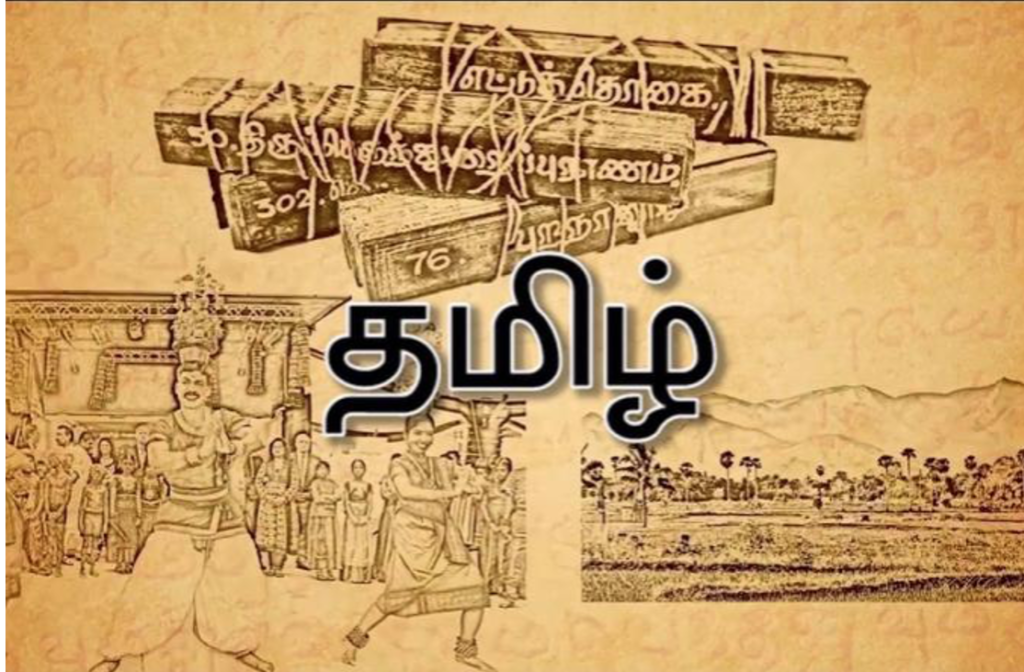
This fascinating triple concept of Iyal – poetry and literary Tamizh இயல், Esai – music இசை, Natakam – Drama நாடகம், twined together, gives a distinguishing foundation of all ethics & ethos to the art of thinking and living of the Tamizh people and, has survived the test of time with different phases of cultural civilisation. Tamizh literature is undoubtedly a valuable source for the reconstruction of cultural history of Ancient Tamizh Nadu.
The earliest known literature of South India that connotes the Tamizh culture is what is known as Sangam Literature ‘the poetry of the noble ones’ (சான்றோர் செய்யுள், Cāṉṟōr ceyyuḷ). Sangam was an association or assembly of Tamizh poets & litterateurs. The literature compiled during the gatherings of learned men is the ‘Sangam Literature’ and the time period – Sangam Age.
There are many scholarly analyses on the dates of the Sangam Age. Some academies even believe that it was written thousands of years before the common era. Generally, the most generally accepted period is situated between 300 BCE and 300 ACE.
The Three Sangams
Madurai, the sociocultural center of Tamizh Nadu, known to have nurtured and celebrated poets and scholars from the Sangam Age, is believed to be the birth place of Tamizh literature. The Sangam Age is the most significant chapter in the history of South India.
According to Tamizh legends, there existed three Sangams (Academy of Tamil poets) in ancient Tamizh Nadu popularly called Muchchangam. These Sangams flourished under the royal patronage of the Pandyas.
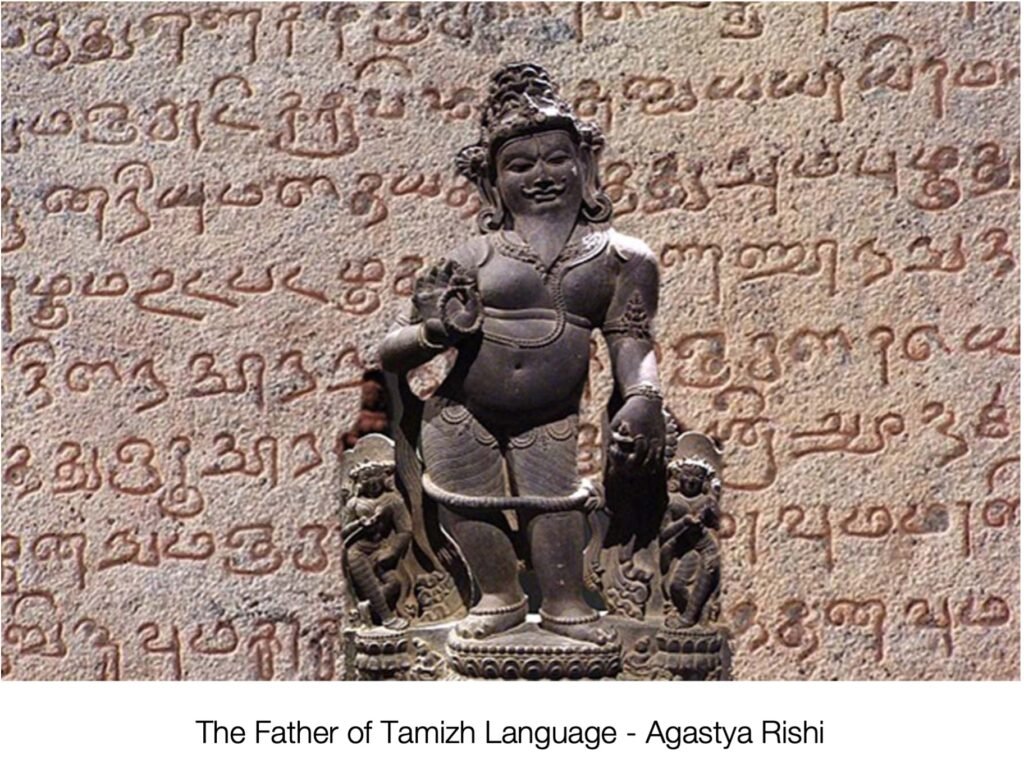
The First Sangam, had its seat in Thenmadurai, held in Madurai, under the patronage of Makeerthy, the Pandyan king. It was attended by gods of Tamizh Pantheon Shiva, Kubera Karthikeya, and sages. The legendary Rishi Agastya is believed to have presided over the First Sangam and he formulated the rules of Tamizh grammar.
The Second Sangam was held in Kapadapuram, second capital of the Pandyas. At the second Sangam Agastya’s disciple Tolkappiar, compiled the authoritative text on Tamizh grammar and aesthetics. All literary works produced by this sangam perished except Tolkappiyam!
The Madurai in which the First & Second Sangams were held got devastated by floods and sank into the sea.Unfortunately, no literary work of the First Sangam is available.
The Third Sangam was hosted in Madurai, a city in the modern Indian state of Tamizh Nadu, and a capital of the Pandyan Dynasty, founded by Pandya King Mudathirumaran and chaired by the great Tamizh poet Nakkirar.

Most of the surviving literature is collected from the Third Sangam, although the extant works are only a fraction of the actual expansive literature it produced.
The Assemblies were meant to evaluate the worth and credibility of the literary compositions of the scholars, and poets. They were attended by a large number of experts, rulers, nobles, citizens to witness the voluminous work of literature.
Shri. P. T. Srinivasa Iyengar, an Indian historian, linguist and educationist mentions in his book “History of Tamils” that the ages mentioned for the Three Tamil Sangams are very long. “The First sangam lasted 4440 yrs and spanned 89 Succeeding Kings, The Second sangam lasted 3700 yrs and spanned 59 Succeeding Kings, The Third sangam lasted 1800 yrs and spanned 49 Succeeding Kings.”
The collection of Sangam Tamizh Literature contains 2381 poems composed by 473 poets, out of which some 102 are anonymous!
The Five landscapes
Nature and its natural elements were a part of the language construct exhibited in classical Tamizh love poetry which ranges across five landscapes: mountainous regions, forests, cropland, seashore and desert.
- kuṟiñci (குறிஞ்சி)-mountainous regions, associated with union.
- Mullai (முல்லை)-forests, associated with waiting.
- Marutam (மருதம்)-cropland, associated with quarreling.
- Naital (நெய்தல்s) seashore, associated with pining.
- Palai pālai (பாலை), or desert, associated with separation
The. geographical connotations of each landscape assign the human sentiments and experiences to specific habitats, symbolized by a flora and fauna characteristic of that particular region. These landscapes also revealed the varied social groups, the occupations, lifestyles and their integration through interaction and interdependence.
The Sangam Dynasties
The Sangam Age was ruled by three powerful dynasties-the Cheras, Cholas and Pandyas. Each of the dynasties of Sangam age had a royal emblem – tiger for the Cholas, carp/fish for the Pandyas, and bow for the Cheras. Their military prowess, wars, victories, contributions to cultural & religious lore, patronage of art & literature are chronicled in the Sangam Literature.

The Kings, as we have seen sponsored and promoted Sangam Literature for thousands of years protecting its sanctity with great love and respect.
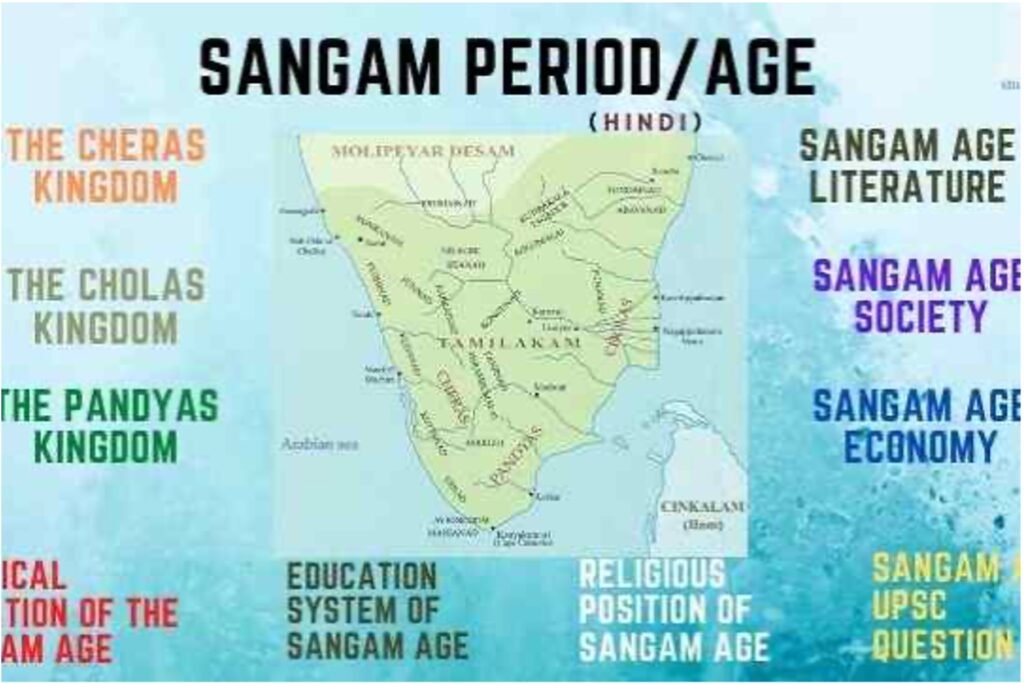

The Two Themes – Inner Outer
The Sangam literature is categorized into two main domains: inner life as அகம் Agam and புறம் the outer life, the public life as Puram.
Agam offers views on the domestic sphere, various facets of love, courtship & marriage, family life etc.
Puram poetry deals with heroism, war, governance, trade, commerce, glory of kings, Social life, philanthropy, societal ethics etc.
The Main Components of Sangam Literature
Spanning over 800 years the main literary works of Sangam Literature is represented by
- 8 anthologies Ettuttogai – The most significant are Maduraikkanji and Aingunurru (500 poems)
- its companion anthologies of 10 Idylls called Pattuppattu , the important ones being Tirumurukāṟṟuppaṭai on Lord Karthikeya by Nakkirar and Kurunchipattu by Kapilar
- ancient Tamizh grammar –Tolkappiyam , and Tamizh Prose – Agattiyam
- 18 didactical works/poems called Patinenakilakanakku – Tirukkural by Thiruvalluvar – a set of 1330 couplets and Avvaiyar’s 33 poems are prominent among them.
- five great epics: –
1. Silappatikaram – an arresting enchanting love story of Tamizh women
2. Manimegalai – an adventurous sequel to the above love story
3. Seevaka Cintamani -a novel based on how a King transformed into an ascetic
4. Kundalakesi – story of a beautiful woman who turns to Buddhism due to disappointment in her love marriage, composed around the 5th CenturyACE
5. Valayapathi – story of an abandoned son who seeks his father’s acceptance based on principles of Jainism, written around the 9 century ACE.

“Tamil, one of the two classical languages of India, is the only (commonly spoken) language of contemporary India which is recognizably continuous with a classical past”.
“These poems are ‘classical,’ i.e., early, ancient; they are also ‘classics,’ i.e., works that have stood the test of time, the founding works of a whole tradition. Not to know them is not to know a unique and major poetic achievement of Indian civilization”.
“In their antiquity and in their contemporaneity, there is not much else in any Indian literature equal to these quiet and dramatic Tamil poems. In their values and stances, they represent a mature classical poetry: passion is balanced by courtesy, transparency by ironies and nuances of design, impersonality by vivid detail, leanness of line by richness of implication. These poems are not just the earliest evidence of Tamil genius. The Tamils, in their 2,000 years of literary effort, wrote nothing better”. – A.K Ramanujam , an Indian poet & scholar on Sangam Literature.



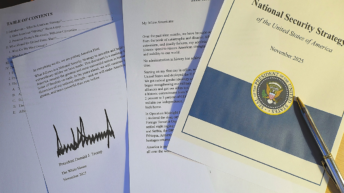


Add comment